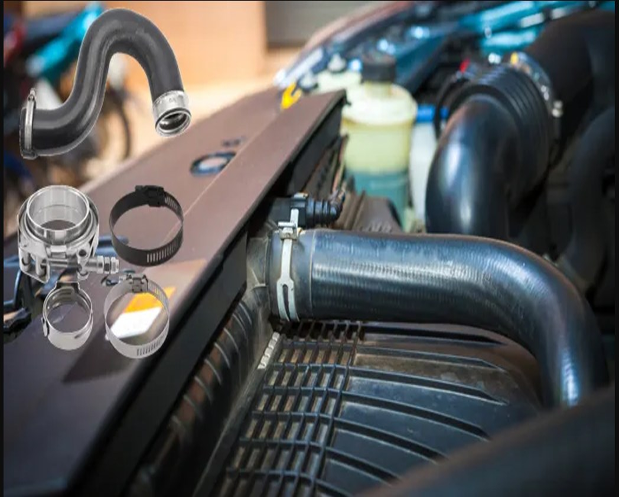- Phone:+86-17331948172 +86-0319-8862898
- E-mail: inquiry@puxingclamp.com
Nov . 10, 2024 04:17 Back to list
Automotive Hose Clamps Production in Manufacturing Facilities and Their Importance in Vehicles.
Hose Clamps in Automotive Factories An Essential Component
In the world of automotive manufacturing, every component plays a crucial role in the overall performance, safety, and efficiency of a vehicle. One such seemingly small but vital component is the hose clamp. These metallic or plastic devices are integral to the function of hoses in various automotive systems, including cooling, fuel, and exhaust systems. This article delves into the role of hose clamps in automotive factories, exploring their types, manufacturing processes, applications, and significance in the automotive industry.
Understanding Hose Clamps
Hose clamps are designed to secure hoses onto fittings, preventing fluid leakage, which is critical for the proper functioning of various systems in a vehicle. Typically made of stainless steel, galvanized steel, or plastic, hose clamps come in different styles, including constant tension clamps, worm gear clamps, and spring clamps. Each type serves specific purposes, catering to the various demands of automotive applications.
1. Worm Gear Clamps These are the most common type used in automotive applications, featuring a band encircling the hose, tightened using a rotating screw. They are favored for their adjustability and ease of installation.
2. Constant Tension Clamps These clamps maintain a constant pressure on the hose, allowing for expansion and contraction due to temperature changes, making them suitable for cooling systems.
3. Spring Clamps Utilizing a spring mechanism, these clamps are quick to install and remove, often found in high-vibration areas.
Manufacturing Process
The production of hose clamps in automotive factories involves several steps to ensure quality and reliability. Initially, raw materials are sourced, typically from suppliers specializing in metals and plastics. The manufacturing process includes
1. Material Preparation Raw materials like stainless steel or plastic are cut, shaped, and prepared for further processing.
hose clamps automotive factories

2. Stamping and Molding For metal clamps, stamping machines press the material into the desired shape. For plastic clamps, injection molding techniques are employed to create the clamp structure.
3. Assembly The components are then assembled, involving the integration of screws or springs, depending on the type of clamp being produced.
4. Quality Control Rigorous testing and inspection are conducted to ensure that each clamp meets industry standards for durability and performance. Tests may involve pressure assessments, corrosion resistance, and tensile strength evaluations.
5. Packaging and Distribution After passing quality control, hose clamps are packaged for distribution to automotive manufacturers or aftermarket suppliers.
Applications in Automotive Systems
Hose clamps serve multiple functions across various automotive systems. In the cooling system, they secure hoses that connect the radiator, water pump, and engine, preventing coolant leaks that could lead to overheating. In the fuel system, hose clamps maintain connections between fuel lines and injectors, ensuring that fuel delivery remains consistent and efficient. Even in exhaust systems, they hold together components, allowing for proper venting of exhaust gases.
The automotive industry relies heavily on hose clamps due to the critical nature of their functions. A failed clamp could result in significant repairs, safety hazards, or even vehicle recalls. Given this, manufacturers prioritize high-quality clamps that can withstand the rigors of temperature changes, vibrations, and exposure to various chemicals.
Conclusion
In conclusion, hose clamps may appear to be simple components, but their impact on automotive manufacturing is profound. Their reliable performance is crucial for the safe and efficient operation of modern vehicles. As automotive factories continue to innovate and improve manufacturing processes, the role of hose clamps will remain indispensable. Their production reflects a complex interplay of engineering, quality assurance, and technology, ensuring that they meet the ever-evolving demands of the automotive industry. As vehicles become more sophisticated, the importance of these small yet significant components cannot be overlooked.
-
High Quality T Bolt Hose Clip Factory & Suppliers Durable Stainless Steel Hose Clamps for Industrial Use
NewsJul.08,2025
-
High-Quality Hose Clamp & T Clamp Hose Clamp Reliable Factory & Suppliers
NewsJul.08,2025
-
Cold Rolled Stainless Steel Band - Premium Quality Supplier & Factory Price
NewsJul.08,2025
-
High-Quality Steel Strip from China Stainless Steel Coil & Cold Rolled Carbon Strip Manufacturer & Supplier
NewsJul.07,2025
-
High-Quality T Bolt Hose Clip from Leading Factory & Suppliers Reliable t bolt hose clip Factories
NewsJul.07,2025
-
Mini Hose Clamp Manufacturer & Supplier Precision Hose Clamps Mini Clamp Factory
NewsJul.07,2025




